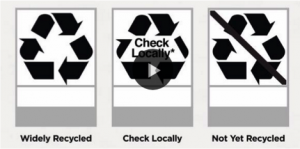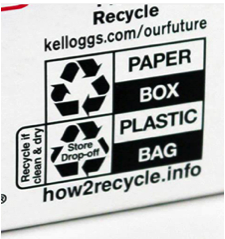In an eye opening study conducted for the Carton Council of North America, it was reported that 67% of people would only assume a packaging was recyclable if it had a symbol or language spelling this out.
That means that if the manufacturer is unable to properly promote recycling on their package, it stands a good chance of ending up in the garbage.
Manufacturers need to take this very seriously indeed because recyclability is more important to a product’s survival in the market than ever, and even than it was just 3 years ago: The same study indicated 77% of those questioned consider the environmental impact of their purchases, and a whopping 91% of study participants consider that it is the role of food and beverage manufacturers to promote the recycling of their packaging.
In terms of clarity in the recycling message, there is one company that we’ve mentioned previously in this blog that does an excellent job of explaining how a product is or isn’t recyclable.
How2 Recycle, an initiative by the Sustainable Packaging Coalition has enlisted product packaging heavyweights such as McDonald’s, Target, Kellogg and a host of other manufacturers to apply an easy to read and easy to use recycle labelling on their products.
These recycling labels indicate whether the product is recyclable but also if it is not(or rather “not yet”).
What is makes these labels really effective however is that they break down the elements of a packaging to let you know how to dispose of each!
Even so, the information comes across quite clearly and, as how2recycle puts it “it takes the guesswork out of recycling”.
Whatever recycling strategy you use for your packaging and regardless whether you use the how2recycle system or not, clarity in your recycling information is proven to be highly desirable for the consumer and good for the environment. Up to you on how to maximize the effectiveness of your message.
Let us know if you would like help in optimizing your packaging for recycling or other information.









